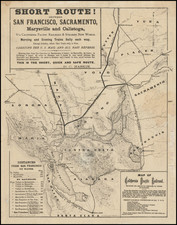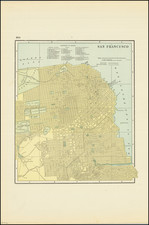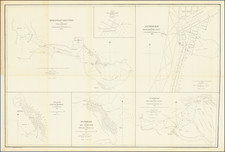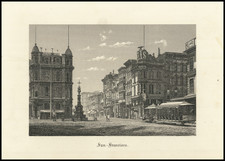An Early Color Photographic View of UC Berkeley and the Bay Area.
Attractive photochrome view of Berkeley, California, taken by one of the West's greatest photographers, William Henry Jackson.
In the immediate foreground, the first buildings of the University of California, Berkeley campus can be seen. The most readily recognizable buildings on the campus are the cylindrical Bacon Library and North and South Halls just beyond it.
Oakland can be seen to the south, with its large railway piers stretching far out into San Francisco Bay.
In the distance, San Francisco, Alcatraz, Angel Island, and Marin are all visible.
This view was repurposed in a smaller format as a postcard for the UC Berkeley campus.
William Henry Jackson and the Photochrom Process
The photochrom process was a method by which black and white photographic negatives could be transferred to lithographic stones and composited to create color photographs. The process was invented by Hans Jakob Schmid in Switzerland in the 1880s. In the U.S., it was licensed exclusively to the Detroit Photographic Company, for whom William Henry Jackson became a photographer in 1897. Jackson went on to become the plant manager in 1903. Photochroms grew in popularity in the United States after the Private Mailing Card Act launched the domestic postcard industry. It is thought that it the peak of photochrom production, the Detroit Photographic Company was producing as many as 7 million per year.













![[San Francisco Earthquake and Fire] Destruction of San Francisco By Earthquake and Fire, April 18th 1906 / Every Building Shown In the Above Picture Was Destroyed by the Great Fire](https://storage.googleapis.com/raremaps/img/small/88832.jpg)
